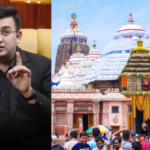Art for community’s sake: Vedanta helps revive dying centuries-old traditions
By Payal Banerjee
Bhubaneswar, April 14: In the heartlands of India, where dusty trails meander through sun-baked villages and ancient hills keep centuries of stories, art has always been more than just beauty. It has been a voice, an identity, a tradition passed down through generations like a family heirloom. In Odisha and Rajasthan, the over four-millennia-old crafts of Dhokra metalwork, Saura paintings, Ajrak block-printing, and Appliqué embroidery have long defined the communities that nurture them. Yet, as the rush of modernity swept through these regions, many of these cherished practices began to fade. Until a determined intervention by Vedanta breathed new life into these crafts, turning them into engines of empowerment and symbols of resilience.
Vedanta, through its inclusive community programs like Project Adikala, Upaya, and partnerships with changemakers like Ruma Devi, has reshaped the futures of artisans, preserving these time-honoured traditions while transforming them into sustainable livelihoods. Today, these crafts flourish, and so do the communities behind them.
A Tapestry of Traditions
Imagine the Jaipur Literature Festival, where booklovers and thinkers from around the world gather under vibrant canopies. Amid this hub of ideas, another kind of story is told through glinting Dhokra figurines, the hypnotic geometry of Saura paintings, the rich Ajrak block-prints on cloth, and the intricate appliqué work, every weft and warp breathing history. Artisans nurtured by Vedanta’s initiatives stand proudly behind these displays, no longer anonymous faces but respected custodians of centuries-old traditions.
UanshuKansari, a Dhokrametalsmith from Kankeri village in Kalahandi district, remembers when his grandfather spent hours artfully shapingbrass and bell metal with unblinking attention to detail, only to sell his artwork to middlemen for paltry sums. “We survived, but just barely,” Uanshu recalls. “When Vedanta came, they taught us new designs, showed us how to connect directly with buyers, and sent us to national exhibitions. Now, my idols and figurines travel to Bhubaneswar, Delhi, and even international events. From earning Rs 4,000 a month, now my income has increased ten times to Rs 40,000,” he shares, pride gleaming in his eyes.
In Rajasthan, Hindustan Zinc with its Sakhi initiative revivedAjrak, a 4,500-year-old block-printing art, through the skilled hands of rural women fondly known as SakhiDidis and helped them find a market through the apparel brand Upaya. For them, Ajrak is not mere print on fabric—it’s heritage reimagined for modern tastes. Once confined to village markets, their intricate textiles now ship across India through e-commerce, carrying a story of resilience and cultural pride.
Ishana Kumari, an artisan from a block printing unit in Ajmerreflected on her experience, “Block printing is not just an art—it’s a legacy passed down through generations. Before joining the Sakhi training centre at Ajmer, I never imagined I could be part of reviving something so rich in history. Today, I feel proud to say that I am learning the skill of block printing with my own hands, and every design I make feels like a tribute to our roots. I’m deeply thankful to Vedanta’s Hindustan Zinc for creating this opportunity through the Sakhi initiative. It’s not just training—it’s empowerment. Through Sakhi, I am building confidence, gaining a livelihood skill, and most importantly, becoming part of a bigger movement to keep our heritage alive.”
Echoing her, Sharmila Devi, another artisan from Ajmer said, “I had always seen block printed fabrics in markets and admired their beauty, but I never thought I would one day be creating them myself. Thanks to the Sakhi initiative, I have found a new identity, a new purpose. I feel connected to something meaningful—reviving a traditional printing style while shaping a better future for myself. I am grateful for the chance to be one of the 18 women in Ajmer being trained in this beautiful art form. With every block I print, I feel stronger, more confident, and inspired.”
Ruma Devi, a grassroots leader from Barmer, started her journey with a single needle and unwavering resolve. “We made appliqué work only for our homes,” she reflects. “With Vedanta Cairn’s support, we trained hundreds of women, created fashion lines, and took our work to national and international platforms. We were once invisible; today, we are business owners, artists, and mentors.” Today, Ruma Devi is the poster-girl of contemporary applique designs at international fairs and events.
Taking Art Beyond Boundaries
Vedanta’s initiatives believe in placing art where it belongs—everywhere. Artisans trained through these programs now showcase their talents at events like the Vedanta DilliHaatCulture Festival, Jaigarh Heritage Festival, Rising Rajasthan, Make in Odisha Conclave, International Aluminium Conference,etc. Nimanti Majhi, a Saura artist, tattoos tribal motifs onto the hands of corporate leaders and dignitaries, turning every hand into a living canvas. “People stop, ask about my work, buy my art, and take my contact. I never imagined my village paintings would travel so far,” Nimanti smiles.
To provide a global platform to artists, the Anil Agarwal Riverside Studios in London is set to become a cultural hub for Indian artists, fostering universal access to art and serving as a vibrant platform for creative expression that transcends borders.
A Movement Backed by Numbers
Over 70 artisans actively practice Dhokra and Saura art in Lanjigarh’sKankeri and nearby villages. More than 150 schoolchildren are learning Saura art, planting seeds of creativity and cultural pride. Since 2018, artisan incomes have grown by over 50%. The initiative has birthed over 300 designs and 21 product categories under the Kalahandi Craft brand. Infrastructure has followed — piped water, roads, and essential amenities now reach these communities.
A Garden of Expression
As World Art Day 2025 celebrates “A Garden of Expression: Cultivating Community Through Art”, Vedanta stands tall as one of its most devoted gardeners. Here, traditions bloom, livelihoods grow, and stories of resilience are etched into every piece of craft, reconnecting communities with their roots and giving them wings.





